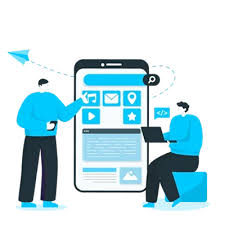Choosing the right Salesforce consulting partner in Paris has become essential for businesses that rely on CRM-driven growth. With companies increasingly adopting Salesforce for sales, service, marketing, and automation, having an expert partner in Paris ensures smooth implementation, customization, and long-term success.
Why the Right Consultant Matters
The wrong consultant? You get poor setups, slow rollouts, and teams that never really buy into the system. The right one, though, will help you:
- Set up Salesforce the right way, right from the start.
- Automate your sales, service, and marketing processes.
- Get your whole team on board and using the platform.
- Customize Salesforce for how your industry actually works.
- Offer ongoing support and tweaks as you grow.
- Maximize your CRM investment.
A good consultant sticks with you, making sure Salesforce evolves as your business does.
- Check Certifications and Know-How
Certifications aren’t just paper—they show your consultant’s legit. Look for Salesforce pros with badges like:
- Salesforce Administrator
- Platform Developer
- Sales Cloud Consultant
- Service Cloud Consultant
- Experience Cloud Consultant
- Marketing Cloud Specialist
Certified folks don’t just know the tech—they build things that last and scale.
- Look for Industry Experience
Every industry has its own quirks. Whether you’re in retail, finance, hotels, healthcare, or real estate, you want someone who’s solved problems like yours before. Ask if they’ve worked on:
- Customer segmentation for shops
- Automating service workflows
- Lead scoring for B2B
- Financial compliance
If they get your world, they’ll deliver faster, smarter solutions.
- Dig Into Their Implementation Approach
A solid Salesforce consultant in Paris doesn’t wing it. You want clear steps, like:
- Discovery and requirements (what do you really need?)
- Roadmapping and design
- Custom development
- Data migration (so nothing gets lost)
- Testing and launch
- Training your team
- Ongoing support
You want transparency, not surprises.
- Ask for Proof: Case Studies and Past Work
Don’t just take their word for it. Ask to see real examples—business challenges they tackled, tech they used, measurable results, and what clients actually say about working with them. Results speak louder than promises.
- Gauge Their Customization and Dev Skills
Your business isn’t cookie-cutter, and your Salesforce shouldn’t be either. A skilled developer in Paris should know how to:
- Build custom objects
- Set up automation
- Create Lightning components
- Integrate with other apps you use
- Design dashboards that actually help
Custom work means Salesforce fits you, not the other way around.
- Don’t Forget Post-Launch Support
Salesforce changes fast. You need a partner who’ll stick around—offering regular check-ins, updates, fixes, extra training, and constant improvements. The launch isn’t the finish line.
- Get Clear on Pricing
Consultants price their work in all sorts of ways—fixed rates, hourly, monthly retainers, or mixes of everything. Don’t just hunt for the cheapest. Look for value, because good consulting saves you money (and stress) over time.
- Pay Attention to Communication
Your ideal partner is upfront. They set clear timelines, keep you in the loop, explain things in plain language, flag risks early, and don’t overpromise. If they’re good communicators, your project goes a whole lot smoother.
Wrapping Up
The right Salesforce consultant in Paris can totally transform how your business works. Focus on their certifications, industry chops, communication style, and support commitment. With the right partner, whether you’re launching, customizing, or scaling up, you’ll get more out of Salesforce—no question.
FAQs
- How do I pick the best Salesforce consultant in Paris?
Check certifications, real-world experience, how they communicate, and past results before you decide. - What does a Salesforce developer in Paris actually do?
They build custom features, connect different systems, and automate things so your business runs smoother. - How much does Salesforce consulting in Paris cost?
It varies—depends on how complex your project is, the consultant’s experience, and what kind of support you need. - Do I need long-term support?
If you want Salesforce to keep working as your business grows and changes, yes—ongoing support is key.




